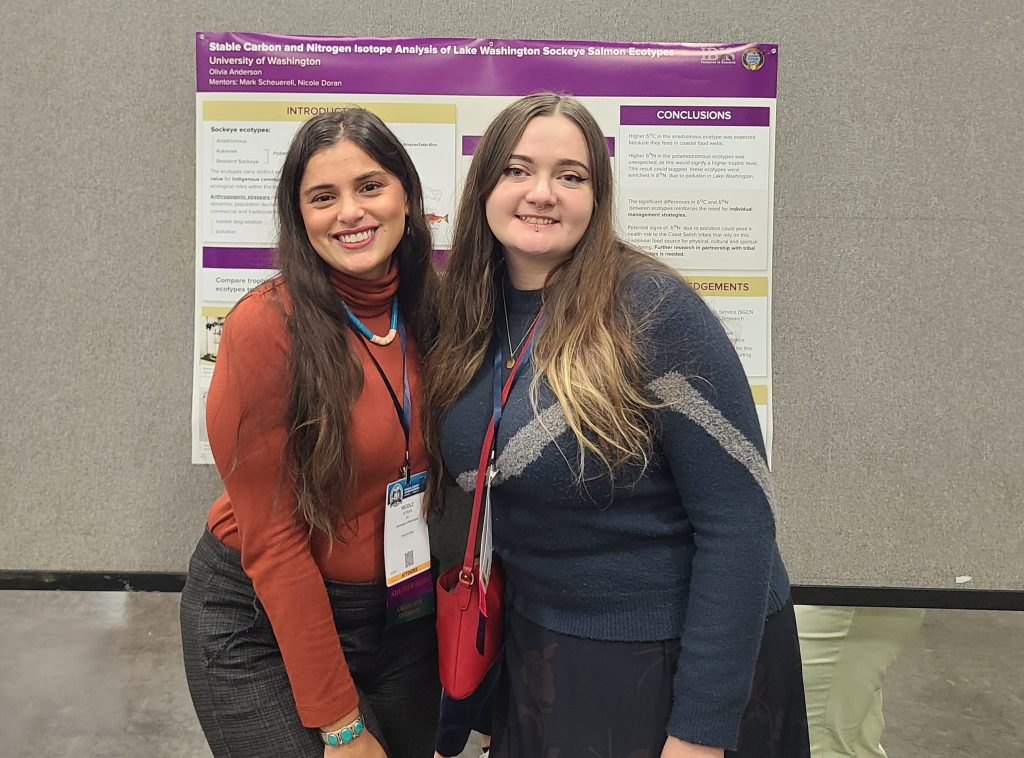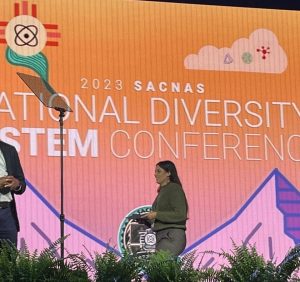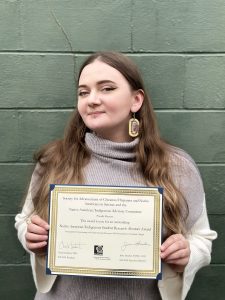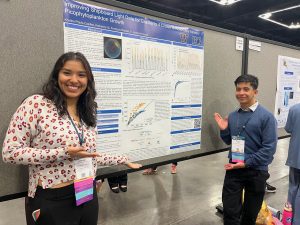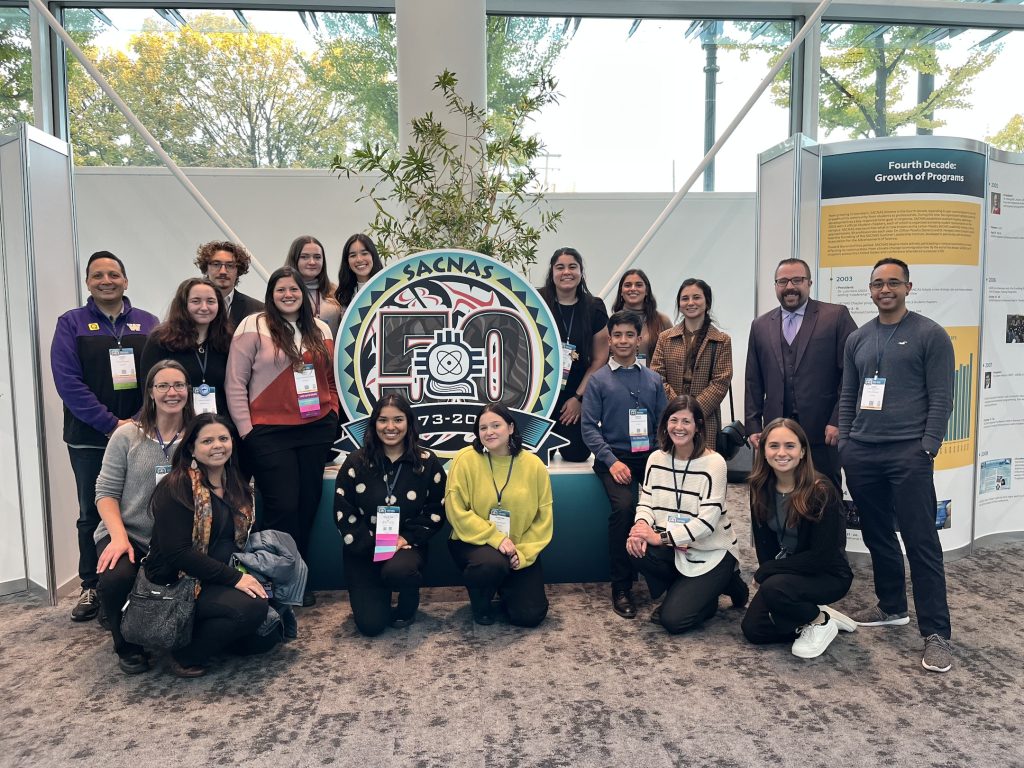From corals, birds and salmon to microplastics, otolith microchemistry and fisheries management, join us for a day full of grad research from around the world.
Integrating mathematics with fishery science: another year of the Varanasi Internship
Now running for over a decade, the Varanasi Quantitative Undergraduate Summer Internship Program brings together math and fisheries sciences in a unique experience for students, who spend a summer working on research projects at NOAA Northwest Fisheries Science Center (NWFSC).
A collaborative program jointly funded by NOAA Fisheries, SAFS and the UW Department of Mathematics, and endowed by Usha and S. Rao Varanasi, students integrate mathematics with the science that informs fishery managers in real-world projects that have relevant and useful applications. 27 UW students majoring in quantitative and computer sciences have so far been able to learn new skills, contribute to research in quantitative and creative ways, and put their studies to practical use. The four 2023 summer interns worked on three different projects that gave them experience with mathematics and data science applied to fisheries problems.

Jiarui Yu, an Applied and Computational Mathematical Sciences (ACMS) Program major, applied state-of-the-art deep learning models on ocean remote sensing data on a project working to develop new methods for detecting coastal upwelling in the Indian Ocean with mentor Dr. Elizabeth “Eli” Holmes. “This internship allowed me to explore topics that I’m interested in, such as machine learning, which was fascinating.” As part of his internship, he participated in OceanHackWeek and led an international team that benchmarked machine-learning models for forecasting sea surface temperature.
Hannah Chiu, majoring in Statistics on the Data Science track, created a Shiny tool to present stock assessment prioritization data for West Coast groundfish. “This internship also stood out to me because the product could be used by resource managers immediately after development, and I wanted to contribute to a project that could create a positive impact through data.”
Being able to learn on the fly was one of the standout experiences for Hannah during the internship. Picking up new skills in a quick timeframe and applying them to her research project was something she describes as extremely valuable and essential for her future academic studies and professional career. She was also able to combine her interests in both marine biology and statistics during her internship: “This was perfect opportunity to work on a project that combined my past and current interests.”
For Jane Christopherson, an ESRM major and Quantitative Sciences minor (and local Seattleite), her internship allowed her to focus on a local species that has a lot of cultural and ecological significance: the Southern Resident killer whale. With her mentors, Jane explored how different killer whale morphometrics change with age, using a variety of nonlinear models to model body condition measurements from captive killer whales to understand how these measurements change over time in healthy, well-fed individuals.
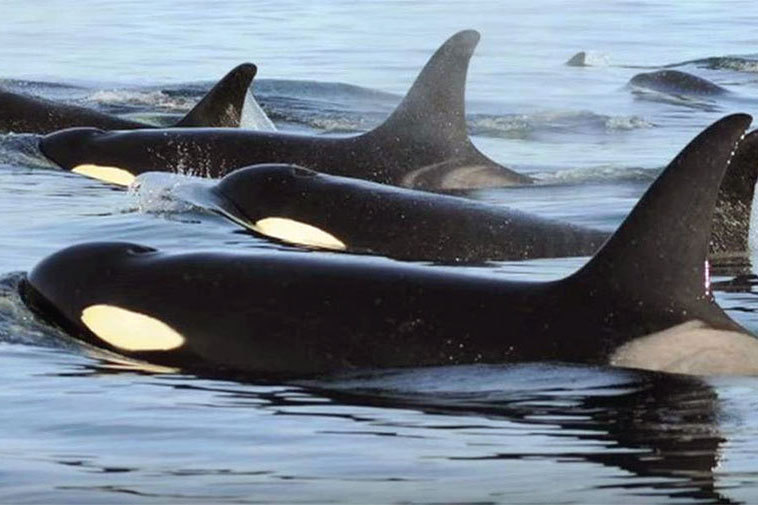
Minh Phan, also in the ACMS Program, worked with mentor Dr. Eli Holmes and fellow intern Jiarui, on the data side of the Indian Ocean coastal upwelling project. This involved obtaining, cleaning, and synthesizing data into appropriate format to feed the machine learning models. “I wanted to work on projects that have real-world applications and Dr. Eli’s project was a perfect example. It helped reveal patterns on one of the most economically impactful natural phenomena, and the machine learning aspect is a novel technology that we wanted to test in the oceanography field.”
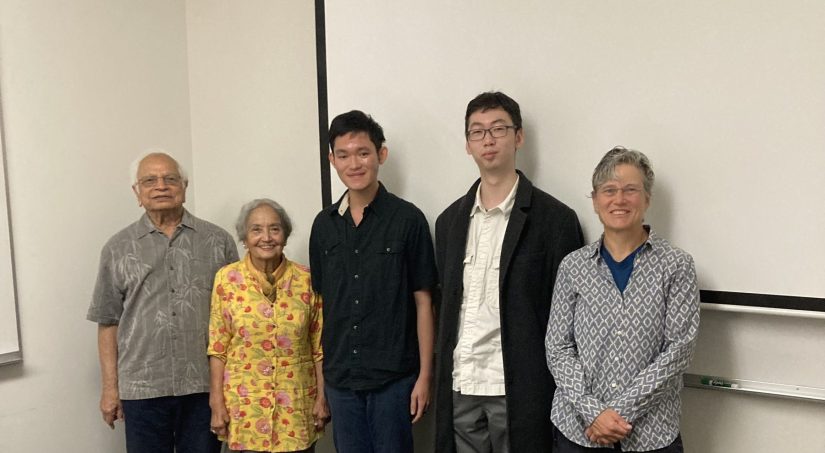
The usefulness of the internship program is a two-way street. Each year, the NWFSC benefits from collaborating with UW students majoring in math with an infusion of new ideas and methods, while mid-level scientists who act as mentors also have the opportunity to step into a managerial role.
One of the highlights of the internship for Hannah was working with her mentors Dr. Chantel Wetzel and Dr. Jason Cope (both SAFS alums). “While they gave me an idea of the general structure that they wanted the Shiny tool to have, I really appreciated being given the creative freedom to develop the tool in my own direction They were both super supportive throughout the whole process, and I am so grateful I had the opportunity to learn from them and work with them this summer.”
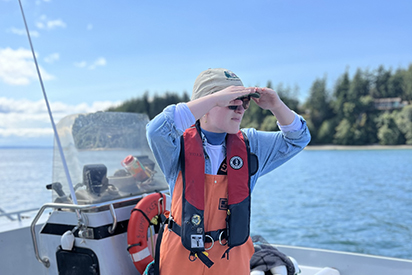
Complementing her knowledge of killer whale conservation with cetacean physiology and modeling from her mentors were some of the skills Jane was able to develop: “I enjoyed learning about killer whale monitoring efforts like aerial photogrammetry from Dr. Dawn Noren, plus learning different tips and tricks in RStudio and how to run complex nonlinear models with Dr. Nick Tolimieri”. Excitingly, Jane’s work over the summer with her mentors has led to a scientific paper in the works, another common result of undergrad-mentor pairings through the Varanasi Internship.
Minh concluded his internship by giving two lectures for the ITCOocean Hack2Week at the International Training Centre for Operational Oceanography in Hyderabad, India: “This was a proud and exciting moment for me, the first time presenting my work in front of a target audience I hadn’t been aware of before.” Gaining hands-on experience with heavy data, how to approach research and write research reports, and building confidence with Python were just some of the ways Minh enhanced valuable skills during his internship by working with his mentor.
Interested in finding out about similar internship opportunities? Make sure to subscribe to your department’s mailing list for the latest information on internships, scholarships, research opportunities and jobs.
Celebrating diversity in STEM and winning student awards at SACNAS 2023
The National Diversity in Stem Conference (NDiSTEM) organized by the Society for Advancement of Chicanos/Hispanics & Native Americans in Science (SACNAS) is the largest multidisciplinary and multicultural STEM diversity event in the U.S., serving to equip, empower, and energize participants for their academic and professional paths in STEM.
At the 2023 event held in October in Portland, SAFS graduate student, Nicole Doran, won the research presentation prize for Best Graduate Student Oral Presentation in the field of Ecology and Evolution, and recent Marine Biology graduate, Olivia Anderson, won a Native American/Indigenous Student Research Abstract Award. Both students worked with the Applied Ecology Lab at SAFS, advised by Mark Scheuerell.
Crediting the NDiSTEM event as a vital part of her academic success, Nicole describes feeling recharged after the event: “SACNAS truly live up to their mission to celebrate diversity in STEM, and they do this through packing in as much Latine and Indigenous culture as they can into a weekend”.
Participating in the conference for the third time, Nicole presented her first thesis chapter and its follow-up project through an oral presentation. Her work involves looking at how settler colonialism has impacted Indigenous food systems, and she presented literature review of academic papers, historical documents, traditional ecological knowledge and reports: “I’m presenting a framework for understanding the layers of environmental injustice that permeates cultural food systems such as those maintained by Indigenous communities.”
Upon receiving her award, Nicole shared that it was a huge honor being awarded at this particular conference: “I have struggled to find an audience that understands my work the way I do, but I found that at SACNAS. It was a huge honor as there were many amazing presentations this year, and being selected to present is very competitive in itself”.
Olivia Anderson, also part of the IBIS mentoring program, attended the SACNAS event for the first time this year and found the wide range of cultures and backgrounds reflected in the projects a breath of fresh air: “It was evident that everyone was deeply passionate about their research, and the event showcased how students from varied backgrounds were not only valued but celebrated for the unique perspectives they bring to the research landscape.”
Events like NDiSTEM play an important role for science by being a space of inclusion and diversity, according to Olivia: “I firmly believe that when students from diverse backgrounds across the nation come together to exchange ideas and knowledge, it strengthens the entire STEM community.”
By providing a forum where students can showcase research that holds deep personal or community significance, Olivia shared why her research on sockeye salmon – a crucial fish for the cultural well-being and sovereignty of Coast Salish Tribes – was so important to share during NDiSTEM: “I enjoyed sharing my research because I feel a close cultural connection to salmon, and I could tell that this personal connection was not unique to me.”
For Associate Teaching Professor José Guzmán, who leads the IBIS mentoring program at UW which matches grad students with undergrads from underrepresented backgrounds in geosciences, he describes SACNAS as a fantastic opportunity for students to get hands-on experience in presenting and communicating their own research in a professional environment. “We had almost 10 undergrads from the IBIS program presenting their posters, which got so much interest from the event attendees. It was really meaningful and fulfilling to see them living and breathing science and acting so professionally while doing it.
“This is exactly the outcome you want to see from mentoring programs like IBIS, where students feel confident and empowered to conduct research and communicate about it,” he added.
Long-term attendee of SACNAS, but for the first time in his new position as Associate Dean of Diversity, Equity and Inclusion at the UW College of the Environment, Corey Garza said that the event is special because it’s a place where students can start to see themselves in science, how they fit in, and where their backgrounds fit in. “SACNAS encourages student scientists to be themselves. It’s important to meet individuals who are both interested in the science you’re conducting, but also you as a person. Witnessing others who look like you or share the same background as you in the science field goes a long way in enhancing diversity and inclusion.”
“I felt so proud to be presenting my full self on the big stage at SACNAS and felt the presence of my mentors and elders walking with me,” said Nicole. “I do this work for future generations.”
“Winning this award has been such a big confidence boost and is such a huge motivation to continue research in the future,” Olivia added.
Read the full experiences of Nicole Doran and Olivia Anderson at the SACNAS NDiSTEM event below.
Nicole Doran, SAFS Graduate Student, Applied Ecology Lab
Olivia Anderson, Marine Biology Graduate 2023
Witnessing one of nature’s most impressive migrations: a summer with the Alaska Salmon Program
Nestled among a set of glacial lakes in the Wood River system is where scientists with the Alaska Salmon Program spend their summers. From students just beginning their research journeys in aquatic sciences, to seasoned field technicians and faculty, the camps based on Lake Aleknagik and Lake Nerka are the temporary home for both scientists and the fish that they are studying: Pacific salmon.

Five different types of Pacific salmon return to the western Alaskan watersheds of the Nushugak River system each summer, but the sockeye salmon is the predominant one in the Wood River system, where the Alaska Salmon Program conducts much of its research. Changing from a silver color in the marine environment to a startling red when they return to freshwater systems, sockeye salmon are one of nature’s most impressive migrations. Year after year, tens of millions of sockeye salmon return to the freshwater systems in which they were born, to continue the cycle of spawning for the next generation of fish.

The Alaska Salmon Program at UW, formerly known as the Fisheries Research Institute (FRI), has been running since the 1940s and continues to this day to deliver the latest insights into Alaska and one of the world’s important aquatic ecosystems and fisheries. It’s also a program that trains the next generation of fishery and aquatic scientists in an immersive, hands-on, and real-world environment that undergoes a huge transformation each year. To date, hundreds of students have visited the field camps in Alaska, with many going on to work in fields such as fishery and wildlife management, environmental education and academia.

So, what does an average day with the Alaska Salmon Program look like? Collecting data on salmon abundance, sex ratios, spatial distributions across spawning areas, species differentiation, and ages of returning salmon from otoliths are just some of the things feeding into the Alaska Salmon Program’s long-term monitoring program. Otoliths, the ear stones of fish which provide information on size and age, are taken from dead salmon which have completed spawning or have been killed by bears.

Another area of research is limnology, which is the study of inland aquatic ecosystems, involving researchers going out on skiffs to various points around the lakes to collect samples including temperature and presence of aquatic organisms like zooplankton, which are the primary food for juvenile sockeye salmon that rear in the lakes before migrating to the ocean.
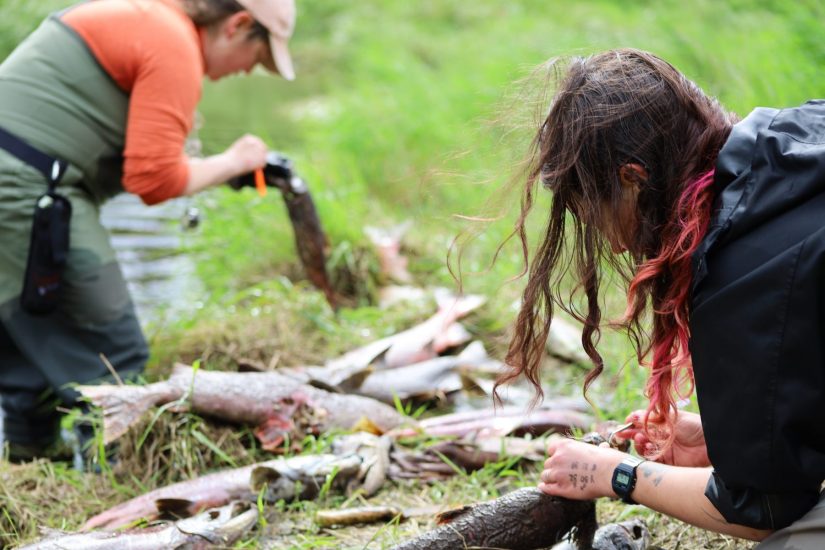
All of this data feeds into the Alaska Salmon Program’s long-term monitoring program that tracks abundance and the impact of wider issues like climate change on these ecosystems. All the different streams and lakes in these watersheds react differently to climate, as do the fish in them – from migrating fish like sockeye salmon to resident fish like rainbow trout and grayling. The data generated from long-term monitoring efforts and research therefore give insight into the impact of climate change on these ecosystems and how the fish are responding when they travel up the streams to spawn.
Another key part of the work of the Alaska Salmon Program is its pre-season forecasts provided to the fishing industry that operates out of Bristol Bay. Forecasts on fish runs and age/weight of fish is important for the management of commercial fisheries as the forecasts allow managers and fishers to fine-tune their operational plans for the following season A new development in this work is providing an earlier pre-season forecast as the industry begins planning for the next season’s operations, even as the current season is winding down.
Watch Part 1 of our mini series with the Alaska Salmon Program
Watch Part 2 of our mini series with the Alaska Salmon Program
Did you know, Aleknagik means ‘Wrong Way’ in Yupik? The Wood River is a major tributary of the Nushagak River, joining the main river near the coast at what is present-day Dillingham. In pre-historic times, if residents traveling inland from the coast reached Lake Aleknagik via Wood River, they knew they’d gone the wrong way if they had actually intended to navigate up the mainstem of the Nushagak.
The scientists watching their life’s work disappear: Kristin Laidre featured in the NY Times
The Arctic is warming much faster than the rest of the planet. I study animals that are inextricably tied to the sea ice, which is disappearing. Narwhals spend most of their time in deep water, in and under dense ice. They need cold water. The other species I study is polar bears. Everything about being a polar bear is tied to the ice. It’s how they move around. It’s how they find mates. It’s how they find food and eat. It’s how they get enough nutrition to successfully reproduce. It’s just their platform of life, basically.
Looking to the past to inform the future
Historical ecology and data-limited fisheries stock assessment methods shed light on threatened Puget Sound Yelloweye Rockfish
By applying elements of historical ecology, fisheries science, and conservation biology in a highly collaborative research effort, researchers from the University of Washington School of Aquatic and Fishery Sciences (SAFS), NOAA Fisheries, and the Washington Department of Fish and Wildlife (WDFW) are delivering new insights into the status of Yelloweye Rockfish.
Listed as threatened under the Endangered Species Act (ESA) in 2010, the population of Yelloweye Rockfish (Sebastes ruberrimus) in Puget Sound/Georgia Basin is considered highly vulnerable due to historical fisheries exploitation and climate change. With their namesake yellow eyes and red-orange bodies, Yelloweye Rockfish are among the largest (up to 36” and 40 lbs) and longest living (110+ years) rockfish species.

Since 2017, the distinct population segment (DPS) of this species inhabiting the Puget Sound/Georgia Basin has been managed under a formal federal recovery plan with biological criteria set out to measure recovery: certain levels of spawning potential ratio (SPR). This metric is an indicator of how well the population is doing, expressed as a percentage of its pre-exploitation population size. However, a lack of data has hampered efforts to estimate this key indicator and monitor recovery.
This challenge was recently tackled by a research team led by SAFS PhD student Markus Min, who worked with partners at NOAA Fisheries and the WDFW. To provide more information to inform recovery management actions, the team delved into the exploitation history and population dynamics of the DPS, with results in a new paper published in the journal Marine and Coastal Fisheries in September 2023.
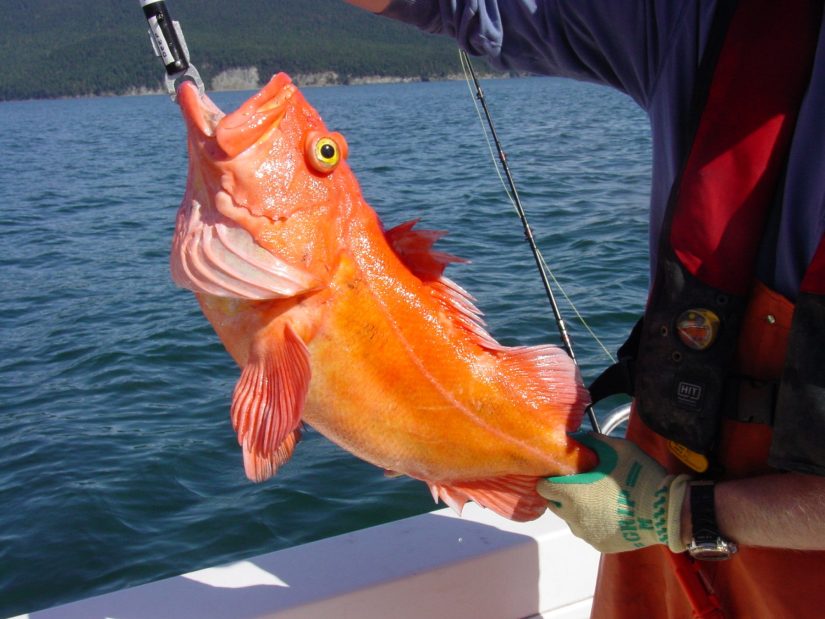
The recovery plan set out by NOAA Fisheries in 2017 focused on SPR, which can be estimated from length compositions. The team at SAFS went a step further and combined length data with a catch history to improve understanding of population dynamics over time. This, in turn, allowed them to estimate a different and more informative measure of stock status, relative (to unfished) spawning stock biomass (SSB), rather than only SPR.
Catches of rockfish in Puget Sound from both the recreational and commercial fisheries have been monitored for decades by the WDFW and its predecessor, the Washington Department of Fisheries. Length data came from several studies in Puget Sound, each with a different purpose. A historical baseline was provided by a survey conducted in the 1970s that sought to understand the biology of various rockfish species caught in the commercial and recreational fisheries, which were expanding at the time. In the 2010s, two studies were conducted to inform the conservation of rockfish – one on the population genetics of Yelloweye Rockfish and other ESA-listed species, and one aimed at understanding how to reduce rockfish bycatch in the recreational lingcod fishery. The distribution of length data from fish caught in these two decades provided two snapshots into the health of the population, spaced forty years apart.

The team reconstructed the catch history of Yelloweye Rockfish from fisheries records, collated the length data from historical and contemporary hook-and-line surveys and fitted a data-limited version of a statistical catch-at-age model. By combining these disparate datasets, the researchers were able to confirm the Yelloweye Rockfish population in Puget Sound was likely highly depleted during the period of concern when the species was initially petitioned for listing under the ESA, and despite a wide range of model uncertainty, the population has a high probability of being above the 25% of unfished spawning potential threshold identified in the recovery plan. This population increase is a result of significant restrictions in both the commercial and recreational fisheries for the past 25 years. While reaching this benchmark is highly encouraging, it addresses only the first criteria in the recovery plan that could lead to delisting; population levels must be maintained for several years to ensure long-term population viability.
Some additional uncertainty remains with regard to population status due to this DPS including Yelloweye Rockfish from South Puget Sound all the way up to the Queen Charlotte Strait in British Columbia. This range means the population falls under different fishery, management, and jurisdictional boundaries, and face variation in key threats. Given the fact that NOAA Fisheries and the WDFW only have jurisdiction over the Puget Sound portion of the DPS, this analysis focused on U.S. waters. In contrast, a commercial fishery for Yelloweye Rockfish still exists in the Georgia Basin portion of the DPS, but a recent Department of Fisheries and Oceans Canada analysis estimated that portion of the population to be at near sustainable levels. In 2020, however, the Committee on the Status of Endangered Wildlife in Canada (COSEWIC) proposed elevating the status of this population from Species of Concern to Threatened due to ongoing ecosystem modifications and climate change.
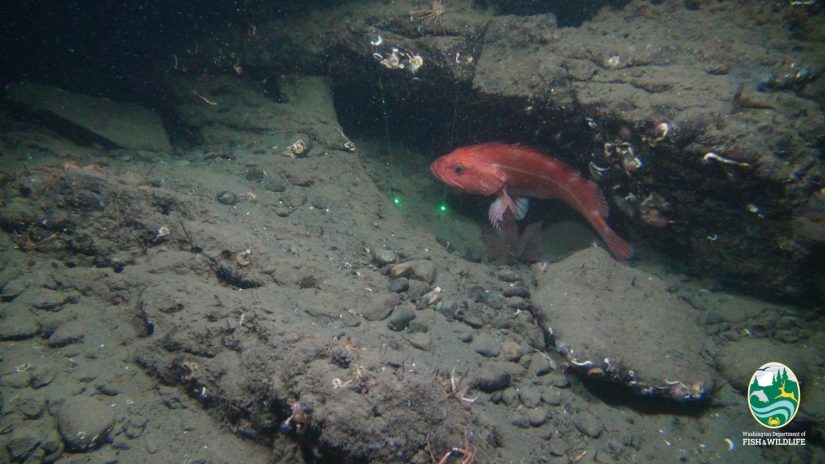
Open lab position for a Research Scientist/Engineer II with SAFS and NOAA
The University of Washington Whale and Dolphin Ecology lab and the Genetics and Evolution lab at NOAA Northwest Fisheries Science Center are seeking to hire a Research Scientist/Engineer II – Molecular Genetics Technician to support projects assessing marine mammal and fish population genetics using a wide variety of genetic lab techniques. The position will primarily support the genetic analysis of killer whale diets using fecal samples, with additional opportunities to work on various fish and marine mammal genetics projects expected.
The position will require the use of a wide range of molecular genetic techniques, as well as bioinformatic sequence processing and some data summary analyses, with opportunities to contribute to reports and manuscripts. Maintaining an inventory of archived biological samples and generated data (and metadata) will require strong organizational skills, familiarity with relational databases and the ability to work collaboratively as part of a diverse team. This position is primarily laboratory based but may involve limited fieldwork.
The desired start date is January 2024, and the position is funded for 12 months with additional time based on availability of funding, through the School of Aquatic and Fisheries Sciences at the University of Washington. The successful candidate will work in Seattle, WA at NOAA’s Northwest Fisheries Science Center.
Salary range: $5,772 – $6,642/month, depending on experience
Location: Seattle, WA
Time Period: Jan – Dec 2024, with option to renew dependent on funding
Visit the job posting at UW for more information and to apply.
Feel free to contact me (avancise@uw.edu) or Kim Parsons (kim.parsons@noaa.gov) with any questions about the position.
New SAFS MS student named Outstanding Graduate of Western Washington’s Marine and Coastal Sciences program
Named as the first Outstanding Graduate of Western Washington University’s Marine and Coastal Sciences program, Amirah Casey has recently joined the Applied Ecology Lab as an MS student, advised by Mark Scheuerell. Amirah shared with us what brought her to SAFS, plus what she is most excited about in this next step in her academic journey.
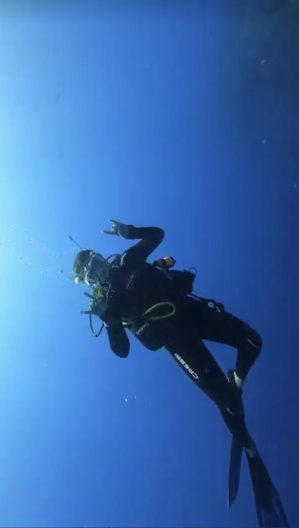
Throughout my undergraduate career I had received many encouragements that I should attend graduate school. After my experience with my marine science education internship, peer mentor position with the Marine and Coastal Sciences program (MACS) at Western Washington University (WWU), TA and research experience, I felt that I was ready for graduate school and knew what it entailed. I began doing research and reaching out to people at different institutions.
While doing so, I was encouraged by people from these institutions to apply anywhere and everywhere as they felt I would make a competitive candidate. The professor at WWU whom I worked most closely with, Dr. Jim Cooper, encouraged me to apply to UW SAFS as it is a world renowned program and would provide many opportunities for me. He also offered me a position as his graduate student. Once my mom passed away, I decided that I needed to attend grad school in Washington so that I could be near my family and take care of some things that were needed after she had passed. That left me the decision between UW and WWU, the same decision I faced when choosing where to go for my undergrad degree.
I reached out to Dr. Mark Scheuerell as I felt that our research interests aligned well. We had a meeting and found that it would be a good fit as an advisor-grad student pairing. He invited me to prospective student days and upon my visit I met Mark’s other grad students, attended a lab meeting, toured the facilities, and met other advisors in the program. I was blown away by the kindness I was shown and impressed with the program. Mark and I then had a meeting with the Washington Department of Fish and Wildlife (WDFW) ecotoxicology group to discuss the possibility of a collaboration on a research project. This meeting got me very excited about future opportunities in SAFS as well as with WDFW.
After further conversations with Mark and with Dr. Cooper who encouraged me to take the position with SAFS as it would be a better fit for me and provide more opportunities, I made my decision. Since starting at SAFS I have been inspired every day by the faculty and other graduate students, and I look forward to what lies ahead.
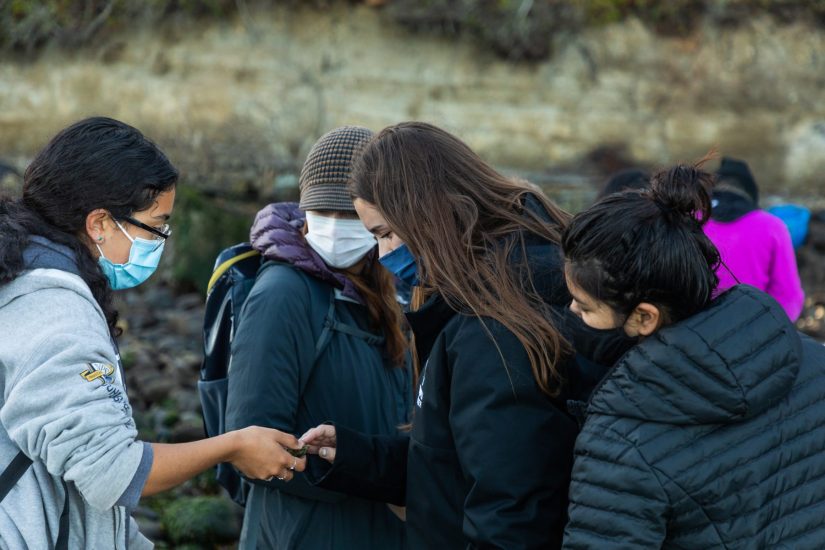
Tom Quinn receives Jack Williams Award for Applied Conservation Science
As part of the Trout Unlimited annual awards, SAFS Professor Tom Quinn has received the Jack Williams Award for Applied Conservation Science. Read about why Tom was selected for this award in the write-up below, reposted from Trout Unlimited.
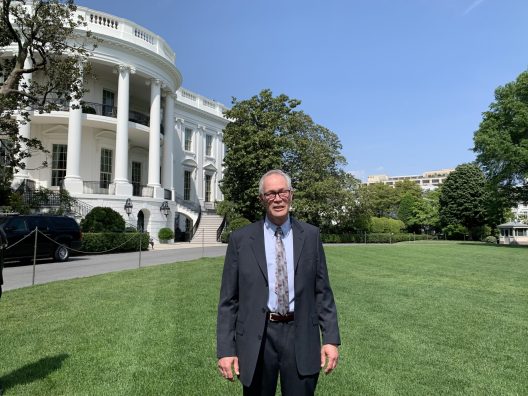
Recently retired from full-time teaching and research at the University of Washington, Professor Tom Quinn deserves massive thanks for the huge body of research and writing on Pacific Rim fisheries and especially on salmon and trout of the Pacific Northwest and Alaska. Notwithstanding his very urban roots in New York City, Professor Quinn migrated westward after college, completing his master’s degree and then Ph.D. in the Fisheries Department at the University of Washington. After spending a few years at the University of British Columbia, Professor Quinn returned to the University of Washington where he taught—or rather inspired—students for over thirty years. His research and teaching encompassed virtually every aspect of the behavior, ecology, evolution, and conservation of Pacific salmon, trout, and char, and their ecosystems. His curiosity has led him to explore everything from how salmon home to their natal streams, to how bear predation enhances salmon ecosystems, to how salmon and trout recolonize streams after dam removals, to how salmon transplanted to the Southern Hemisphere adapt, and to how human activities have impacted the evolution and ecology of trout and salmon. Capping off the hundreds (yes, hundreds) of scientific papers, his seminal book, The Behavior and Ecology of Pacific Salmon and Trout (2018) is a beautiful and accessible work that dives deeply into all aspects of the life cycle of Pacific salmonids.
Professor Quinn’s legacy is not merely the words he has put on paper. He dons his waders and works in the field. For decades, he has traveled to Alaska’s Bristol Bay region with students to provide training and conduct hands-on research into limnology, juvenile fish ecology, spawning behavior and life history of adult salmon, population dynamics, and fishery management. Indeed, as a field ecologist, Tom is well-known in the communities surrounding Lake Iliamna where he led a field research program for nearly thirty years, bringing his knowledge and passion to the region, and to the generations of students who have had the opportunity to walk streams and categorize bear-killed salmon alongside him. His decades of work on salmon in Alaska were instrumental in the successful efforts to halt the Pebble Mine project that jeopardized the sockeye salmon runs in Bristol Bay. His efforts were even recognized by the White House at a Rose Garden ceremony in May.
Yet, Tom’s most lasting legacy will be the students he has taught and inspired. His enthusiasm, scholarship, careful research, and love of trout and salmon have inspired several generations of students to emerge as leaders in salmon and trout conservation. His students are now leaders in government agencies, conservation organizations, academia, and industry. Those leaders will undoubtedly carry on Tom’s legacy and enthusiasm for many future generations to care about conserving salmon and trout. Trout Unlimited is incredibly thankful for Professor Quinn’s lifelong work and inspiration, and we can think of no one more deserving of the Jack Williams Award for Applied Conservation Science.
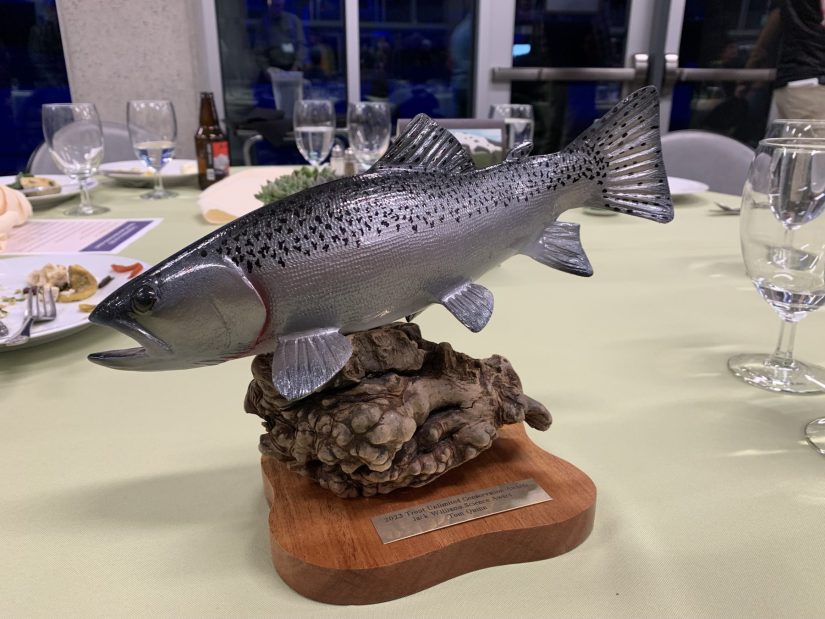
Why are some protected species failing to recover?
New study uses integrated population models to predict extinction risk for Cook Inlet beluga whales and lend insight into factors limiting the recovery of protected populations.
Sparse monitoring data and persistent knowledge gaps can hamper conservation efforts aimed at recovering depleted wildlife populations. In a new study, researchers from the UW School of Aquatic and Fishery Sciences (SAFS) set out to tackle this issue for federally endangered Cook Inlet beluga whales by developing an integrated population model that capitalizes on all available information to understand factors that may be affecting survival, reproduction, and population viability.
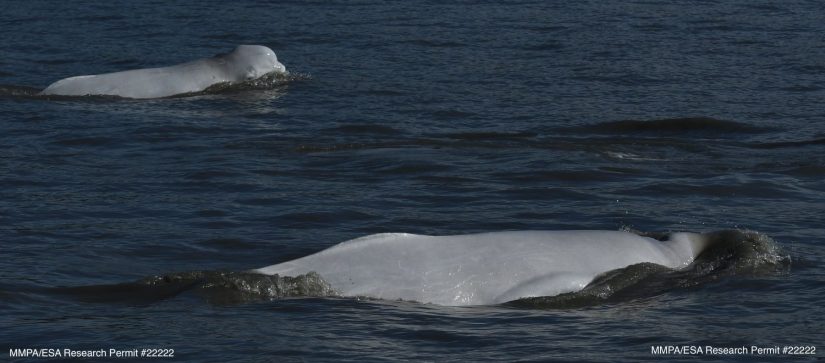
Listed as endangered under the U.S. Endangered Species Act, the Cook Inlet beluga whale (Delphinapterus leucas) population has declined approximately 75% since the 1970s. The major results from the new study, published on Oct. 6 in the journal Animal Conservation, indicate that the population will likely continue to decline, with a 17-32% probability of extinction in 150 years and a low probability of reaching recovery targets in that time frame. The researchers also found that survival of non-breeding whales and overall reproduction in Cook Inlet may be depressed compared to other beluga populations, suggesting that these demographic rates may be behind the ongoing declines. Researchers highlighted the potential benefit of bolstering reproduction in particular, though identifying and implementing conservation actions that might facilitate that is challenging.

SAFS PhD student Amanda Warlick led the effort, along with USGS Washington Cooperative Fish and Wildlife Research Unit Leader and Associate Professor Sarah Converse. SAFS researchers teamed up with biologists from Montana State University, the Cook Inlet Beluga Whale Photo-ID Project, and the NOAA Alaska Fisheries Science Center’s Marine Mammal Laboratory to develop a Bayesian integrated population model using mark-resight and aerial count data from 2004-2018. The turbid waters and unpredictable weather conditions in Cook Inlet make collecting these data difficult. Moreover, the permanent scars and marks used to individually identify belugas and build mark-resight datasets only reliably show up in older animals. These data limitations, coupled with the complexity of the life history of these whales, made model development challenging. However, given the difficulties of collecting the data, getting the most from them is critical. Integrated population models are designed to do just that, by bringing together all available data to better understand demography, threats, and population viability.

Dr. Warlick and the research team also examined the effects of salmon prey availability and oceanographic conditions on beluga vital rates. They found that reproduction was correlated with metrics of prey availability, with lower reproduction in years of poorer prey availability. Further study is needed to better understand the link between prey populations and beluga demography.

Many questions remain about why protected populations sometimes fail to recover despite managers’ best efforts. This study highlights the utility of integrated population modeling for maximizing the usefulness of available data to identify factors limiting the recovery of declining wildlife populations. The hope is that this model can be used on an ongoing basis to better understand what is happening with Cook Inlet belugas as more data become available, while also inspiring the development of similar models for other declining species.

